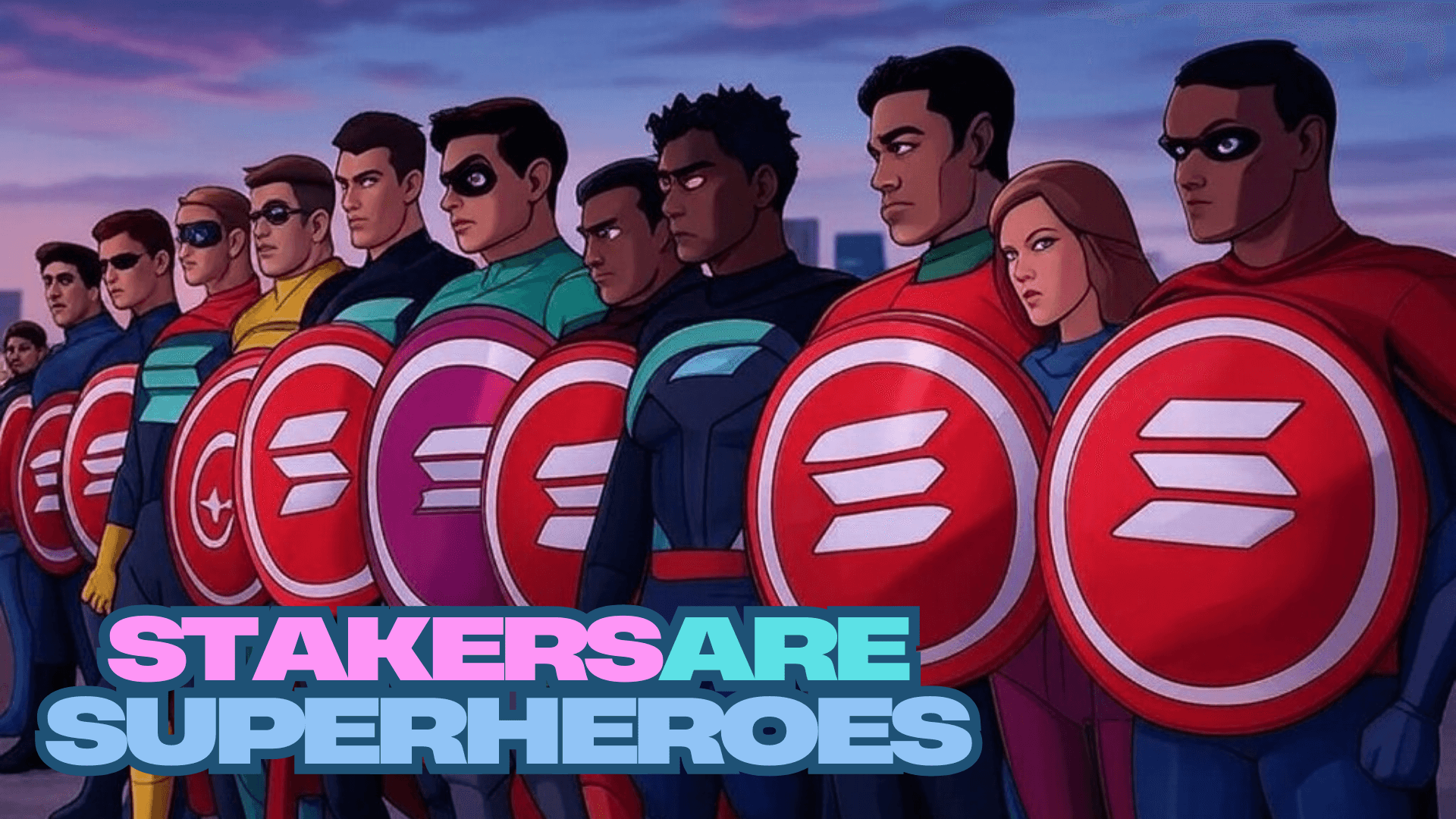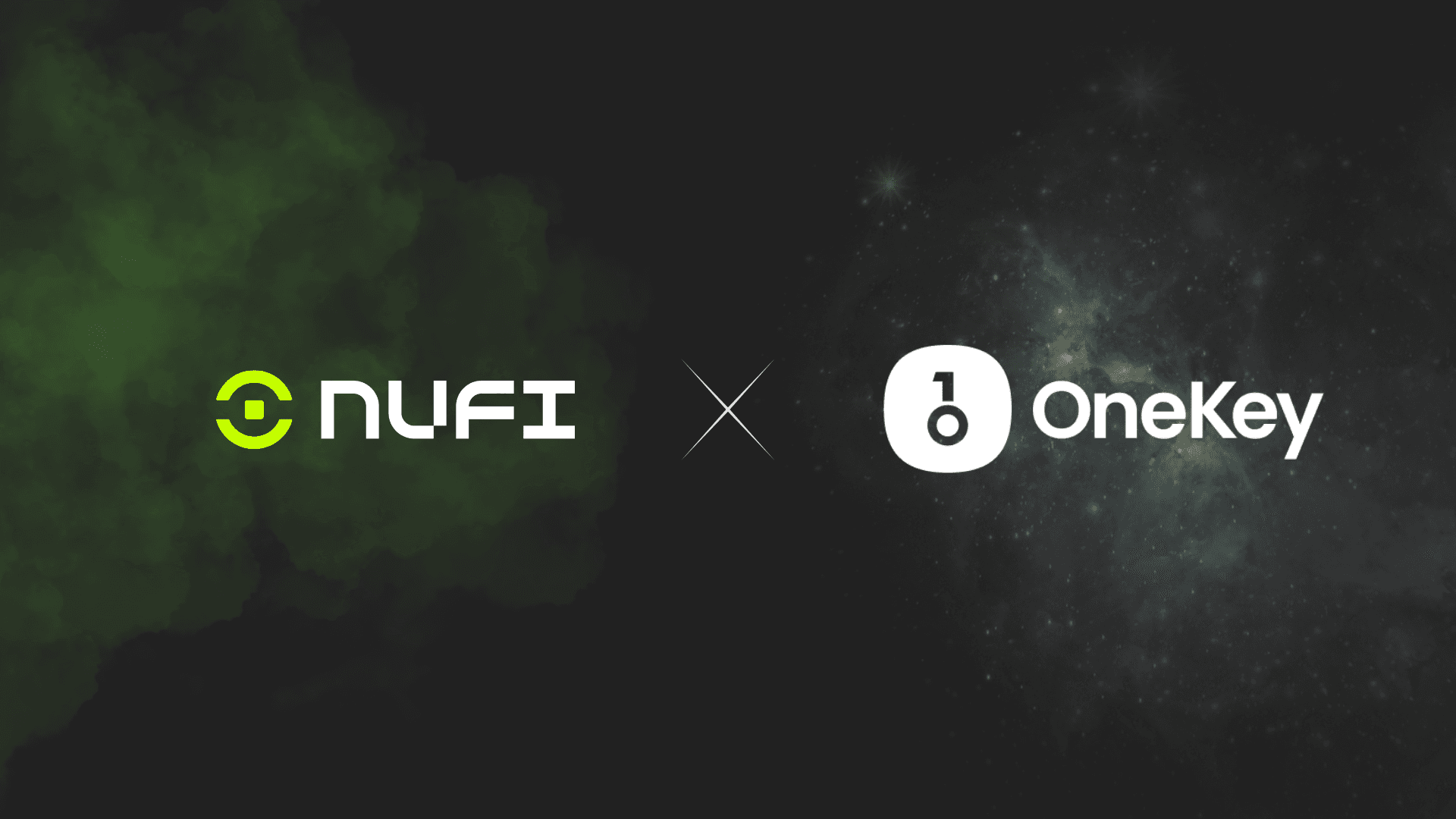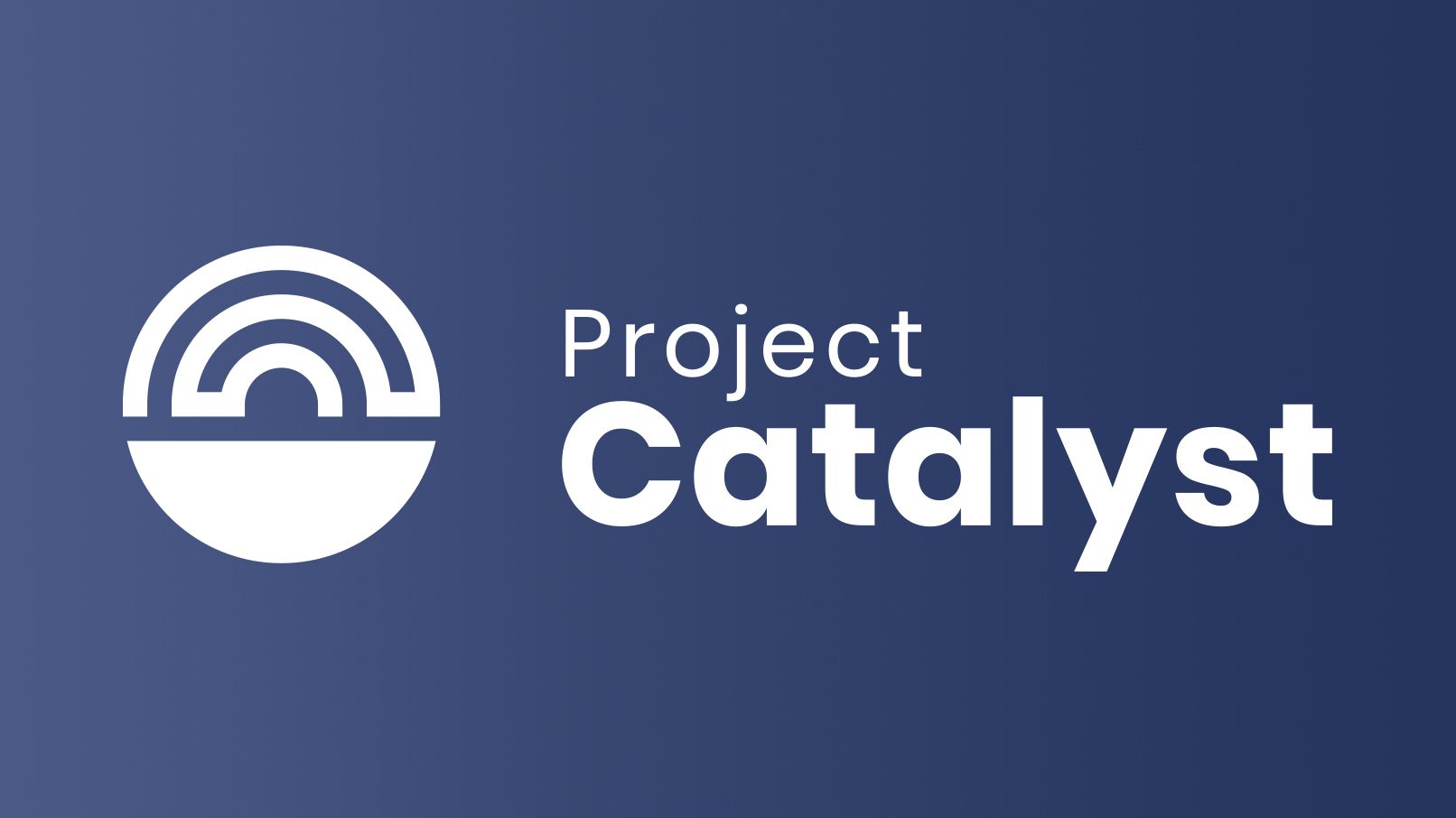Stakers: the heroes that secure Solana blockchain
5 min read
Feb 17, 2025
Staking SOL is how Solana holders help the blockchain to stay secure – all while earning SOL rewards as a thank you. But what exactly is staking, and why is it so important?

In this blog post:
- What is Solana Staking?
- How Does it Keep Solana Secure?
- What Does a Solana Validator Do?
- About Solana Staking Rewards
- Solana Staking Glossary & FAQs
Important: Solana staking is available to anybody holding Solana in a non-custodial wallet, including Solana-compatible hardware wallets like Trezor, Ledger, and GridPlus.
What is Solana staking? How does it keep Solana secure?
-
First, know that Solana (SOL) tokens have voting power; this is a feature of Proof-of-Stake blockchains, where decision making must be decentralized and democratic.
-
If you stake SOL, its voting power is activated and it can be used by the blockchain to vote whenever the blockchain needs to make a decision, for example when verifying new transactions and deciding if they should be included in a new block.
-
By voting, staked SOL helps the Solana blockchain to reach a broad consensus without giving authority to a single entity (who may act maliciously, e.g. by approving bogus transactions in order to steal funds).
-
This type of consensus mechanism is called Proof-of-Stake, and it’s how the Solana blockchain can remain decentralized and resilient against attacks.
-
As a thank you for staking, you earn rewards in the form of additional SOL tokens paid directly into your account by the blockchain itself.

How Does Solana Staking Work?
When you stake SOL, you delegate your tokens to a validator who uses your SOL's voting power on your behalf. Delegating can be done inside any Solana wallet that supports staking.
Good to know: Many Solana wallets (e.g. NuFi) support staking with Solana-compatible hardware wallets like Trezor, Ledger, and GridPlus.
About Solana Validators
-
A validator is responsible for processing transactions and adding new blocks to the blockchain’s ledger – this happens roughly twice per second on Solana blockchain (Solana’s blocktime is ~400 milliseconds).
-
The blockchain selects a validator to add (aka ‘mint’ or ‘forge’) each new block, and then rewards the validator for doing so. The validator shares the rewards with the people who delegated to them.
-
Certain factors increase a validator's chances of being selected to mint a new block, including more stake delegated to it, high performance and availability, and a good track record.
Important:
- When you stake with a non-custodial wallet (like NuFi), you don’t transfer ownership of your SOL to the validator: staked SOL never leaves your wallet.
- SOL staking rewards are automatically staked.
- There's no minimum staking period (i.e. no commitment); if you unstake, your SOL becomes available after a cool-down period of up to 2 days.
When Do I Get Solana Staking Rewards?
Rewards Schedule: when you first start staking, it can take up to 2 days for your stake account to become active (= warm-up period; see below) and then another 2 days to receive your first staking rewards.
From then on, you'll receive staking rewards every epoch (2 days), paid directly into your stake account.
Important: The SOL staking rewards you receive are automatically staked.
Rewards Amount: How many staking rewards you receive depends on how much SOL you stake, the validator’s performance, and any commission fees they charge (many validators charge 0% commission). Typical APY for Solana staking is around 8%.
- Depending on the validator you stake to, you can also earn extra rewards called MEV rewards, which are paid directly into your stake account by Jito
- Total APY including MEV rewards is usually around 10%
- You can see if delegating to a validator makes you eligible for MEV rewards using a site like Solana compass: look for the Jito MEV badge at the top, as shown here for NuFi's validator)
Important: You can stake Solana using a Trezor, Ledger or GridPlus hardware wallet but staking-related information like staked balance and staking rewards is not displayed inside the Trezor Suite or Ledger Live software.

Solana Staking Glossary
Epochs: Solana staking operates in cycles called “epochs,” which last approximately 2 days.
At the end of each epoch, the blockchain processes requests to start staking, stop staking, etc, which is why it can take several days for actions to be completed.
Warm-Up Period: When you first stake your SOL, there is a short warm-up period before your stake account becomes active and you start to earn rewards. This can take up to 2 days.
Cool-Down Period: If you decide to unstake some or all of your delegated SOL, you must wait through a cool-down period. It can take up to 2 days before the unstaked SOL becomes available for you to withdraw back into your main account.
FAQs
Q: Is Solana staking safe?
A: Yes, staking is safe. Staked SOL never leaves your wallet and you don't ever transfer control. Choosing a reliable validator (like NuFi’s validator here) is important to avoid high fees or potential slashing (penalties for validators behaving dishonestly).
Q. Can I still use my SOL while staked?
A: No, staked SOL is locked, but you can unstake it whenever needed. Keep in mind the cool-down period.
Q: How much can I earn from staking?
A: The annual yield varies but is typically around 7-8% per year minus validator fees, if any. Additionally, the MEV rewards can amount to an additional 1-3% depending on network traffic (if the validator is part of Jito MEV infrastructure).
Recent Posts

NuFi wallet x OneKey: best-in-class security while you put your crypto to work
NuFi wallet and OneKey: a potent combo for crypto users who want best-in-class hardware wallet security while staking, trading, and using dApps.
Read More

Project Catalyst Fund14: Have your say on how Cardano grows
Make your voice heard in Cardano by voting for the new projects that deserve funding.
Read More